 W
WThe 1st Staffordshire Artillery Volunteers, later 2nd North Midland Brigade, was a Volunteer unit of the Royal Artillery of the British Army recruiting primarily from Staffordshire that fought on the Western Front during the First and Second World Wars in the Normandy Campaign and Belgium, Holland, and Germany.
 W
WThe Royal Dragoons was a mounted infantry and later a heavy cavalry regiment of the British Army. The regiment was formed in 1661 as the Tangier Horse. It served for three centuries and was in action during the First and the Second World Wars. It was amalgamated with the Royal Horse Guards to form The Blues and Royals in 1969.
 W
WThe 10th Royal Hussars was a cavalry regiment of the British Army raised in 1715. It saw service for three centuries including the First World War and Second World War but then amalgamated with the 11th Hussars to form the Royal Hussars in October 1969.
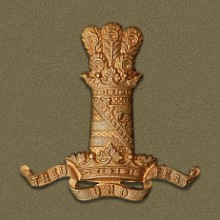 W
WThe 11th Hussars was a cavalry regiment of the British Army established in 1715. It saw service for three centuries including the First World War and Second World War but then amalgamated with the 10th Royal Hussars to form the Royal Hussars in 1969.
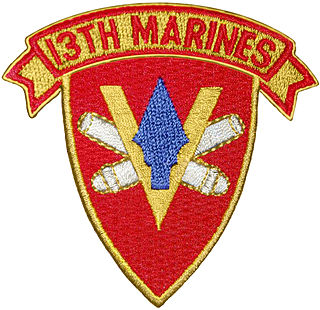 W
WThe 13th Marine Regiment was an artillery regiment of the United States Marine Corps. The regiment was activated for service three times during the 20th century when the Marine Corps expanded to meet war time requirements. Originally activated as an infantry regiment during World War I, the unit arrived in France before the war ended but did not participate in combat operations. It was reactivated for service in World War II as the artillery regiment for the 5th Marine Division. The unit saw intense combat during the Battle of Iwo Jima, participated in occupation duty in Japan and was quickly decommissioned shortly after the war. The regiment was last activated during the Vietnam War to again provide fire support for 5th Marine Division regiments supporting operations in South Vietnam. The regiment was finally deactivated on October 15, 1969, as the Marine Corps began to draw down its force structure at the conclusion of the Vietnam War.
 W
WThe 19th Military Airlift Squadron is an inactive United States Air Force unit. It was last assigned to the 62d Military Airlift Wing, Military Airlift Command, stationed at McChord Air Force Base, Washington. It was inactivated on 22 December 1969.
 W
WThe 820th Base Defense Group is a force protection unit of the United States Air Force currently based at Moody Air Force Base, Georgia. The group was activated in 1997 as a trained force protection unit of 12 Air Force Specialty Codes with an airborne capability. The group provides the expeditionary Air Force's only worldwide deployable, "first-in", fully integrated, multi-disciplined, highly qualified, self-sustaining force protection capability. The 820th BDG is comprised of the 822nd BDS, 823rd BDS, 824th BDS and the 820th COS.
 W
W430 Tactical Helicopter Squadron is a unit of the Canadian Forces under the Royal Canadian Air Force. It operates Bell CH-146 Griffons from CFB Valcartier, near Quebec City in Quebec, Canada.
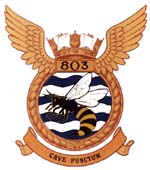 W
W803 Naval Air Squadron was a Royal Navy Fleet Air Arm squadron.
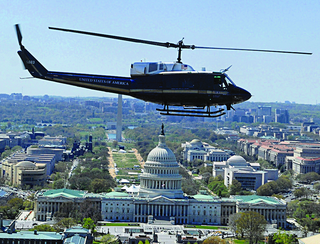 W
WThe 1st Helicopter Squadron is a United States Air Force unit based at Joint Base Andrews, Maryland reporting to the 316th Operations Group, administratively controlled by Air Force District of Washington.
 W
WThe Westminster Dragoons (WDs) was a yeomanry regiment of the British Army Army Reserve, located in central London. Its lineage is continued by one of the Royal Yeomanry's six squadrons. Formed in the aftermath of Second Boer War as part of the County of London Yeomanry, the WDs fought in the Battle of Gallipoli and led British forces onto the beaches during the Normandy Invasion in 1944. The squadron most recently saw action on Operation Telic, for which it was mobilised for the 2003 war in Iraq.
 W
WThe Ceremonial Guard (CG) is an ad hoc military unit in the Canadian Armed Forces that performs the Changing the Guard ceremony on Parliament Hill and posts sentries at Rideau Hall, the residence of the Governor General of Canada, with the National War Memorial being sentried by the National Sentry Program (NSP), which is carried out by different regiments and other units in order of precedence throughout the summer until mid-November.
 W
WThe Commander-in-Chief, Plymouth was a senior commander of the Royal Navy for hundreds of years. Plymouth Command was a name given to the units, establishments, and staff operating under the admiral's command. Between 1845 and 1896 this office was renamed Commander-in-Chief, Devonport. The Commanders-in-Chief were based in what is now Hamoaze House, Devonport, Plymouth from 1809 to 1934 and then at Admiralty House, Mount Wise, Devonport from 1934 until 1996.
 W
WThe Commander-in-Chief, Portsmouth was a senior commander of the Royal Navy for hundreds of years. Portsmouth Command was a name given to the units, establishments, and staff operating under the post. The commanders-in-chief were based at premises in High Street, Portsmouth from the 1790s until the end of Sir Thomas Williams's tenure, his successor, Sir Philip Durham, being the first to move into Admiralty House at the Royal Navy Dockyard, where subsequent holders of the office were based until 1969. Prior to World War One the officer holder was sometimes referred to in official dispatches as the Commander-in-Chief, Spithead.
 W
WGöta Air Force Wing, also F 9 Säve, or simply F 9, was a Swedish Air Force wing with the main base located near Gothenburg in south-west Sweden.
 W
WNo. 1 Basic Flying Training School was a flying training school of the Royal Australian Air Force (RAAF). Along with No. 1 Initial Flying Training School, it was formed in response to increased demand for aircrew during the Korean War and Malayan Emergency. No. 1 BFTS was established in December 1951 at RAAF Base Uranquinty, New South Wales, where it operated de Havilland Tiger Moths and CAC Wirraways. The school absorbed the activities of No. 1 IFTS in January 1955, as aircrew training requirements had eased following the end of the Korean War. No. 1 BFTS moved to RAAF Base Point Cook, Victoria, in May 1958, by which time it was exclusively flying CAC Winjeels. Its training program expanded in the mid-1960s owing to Australia's commitments in the Vietnam War. No. 1 BFTS was re-formed as No. 1 Flying Training School at Point Cook in January 1969.
 W
WNumber 17 Squadron, currently No. 17 Test and Evaluation Squadron (TES), is a squadron of the Royal Air Force. It was reformed on 12 April 2013 at Edwards Air Force Base, California, as the Operational Evaluation Unit (OEU) for the Lockheed Martin F-35B Lightning.
 W
WNo. 105 Squadron was a flying squadron of the Royal Air Force, active for three periods between 1917 and 1969. It was originally established during the First World War as a squadron of the Royal Flying Corps and disbanded after the war. Reactivated shortly before the Second World War, it was inactive again after the conflict. During its second existence it was a bomber unit and had the distinction to be the first to operate the de Havilland Mosquito light bomber. During the 1960s it was reactivated again for six years to provide transport support for the British Army in the Aden Protectorate and the Far East.
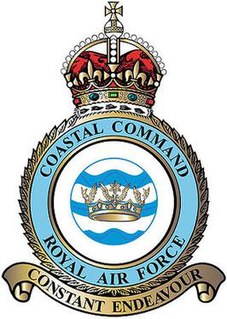 W
WRAF Coastal Command was a formation within the Royal Air Force (RAF). It was founded in 1936, when the RAF was restructured into Fighter, Bomber and Coastal Commands and played an important role during the Second World War. Maritime Aviation had been neglected in the inter-war period, due to disagreements between the Royal Navy (RN) and RAF over the ownership, roles and investment in maritime air power.
 W
WThe Royal Regiment of Horse Guards (RHG) was a cavalry regiment of the British Army, part of the Household Cavalry.
 W
WThe Shropshire Yeomanry was a yeomanry regiment of the British Army, first raised in 1795, which served as a cavalry and dismounted infantry regiment in the First World War and as a cavalry and an artillery regiment in the Second World War. It was then amalgamated with the Shropshire Royal Horse Artillery.
 W
WThe South Wales Borderers was a line infantry regiment of the British Army in existence for 280 years.
 W
WNumber 207 Squadron is an historic bomber squadron and, latterly, a communications and flying training squadron of the Royal Air Force. It was announced on 5 July 2017 that No. 207 Squadron will again reform to become the Operational Conversion Unit for the UK F-35B Lightning Force and will return to RAF Marham in Norfolk where it was last based in 1965. No. 207 Squadron arrived at RAF Marham with six F-35Bs on 16 July 2019 before officially standing up on 1 August.
 W
WThe Tiradores de Ifni were volunteer indigenous infantry units of the Spanish Army, largely recruited in the enclave of Ifni The tiradores were originally recruited from the Spanish Morocco, forming part of the Army of Africa and mostly officered by Spaniards, these troops played a role in the Spanish Civil War (1936–39).
 W
WThe Welch Regiment was an infantry regiment of the line of the British Army in existence from 1881 until 1969. The regiment was created in 1881 under the Childers Reforms by the amalgamation of the 41st (Welch) Regiment of Foot and 69th Regiment of Foot to form the Welsh Regiment, by which it was known until 1920 when it was renamed the Welch Regiment. In 1969 the regiment was amalgamated with the South Wales Borderers to form the Royal Regiment of Wales.
 W
WThe 4th Lancashire Artillery Volunteers, later renamed to the 4th West Lancashire Brigade, known as 'The Old 4th', was a part-time unit of the British Army's Royal Artillery founded in Liverpool in 1859. It served on the Western Front during World War I, one of its members winning the Victoria Cross at Cambrai. Between the world wars the unit pioneered mechanical traction methods. During World War II it formed three regiments that saw action at Dunkirk, in East Africa, on Crete, at Tobruk, in Burma, and in the final campaigns in Italy and North West Europe. It continued in the post-war Territorial Army until 1973.